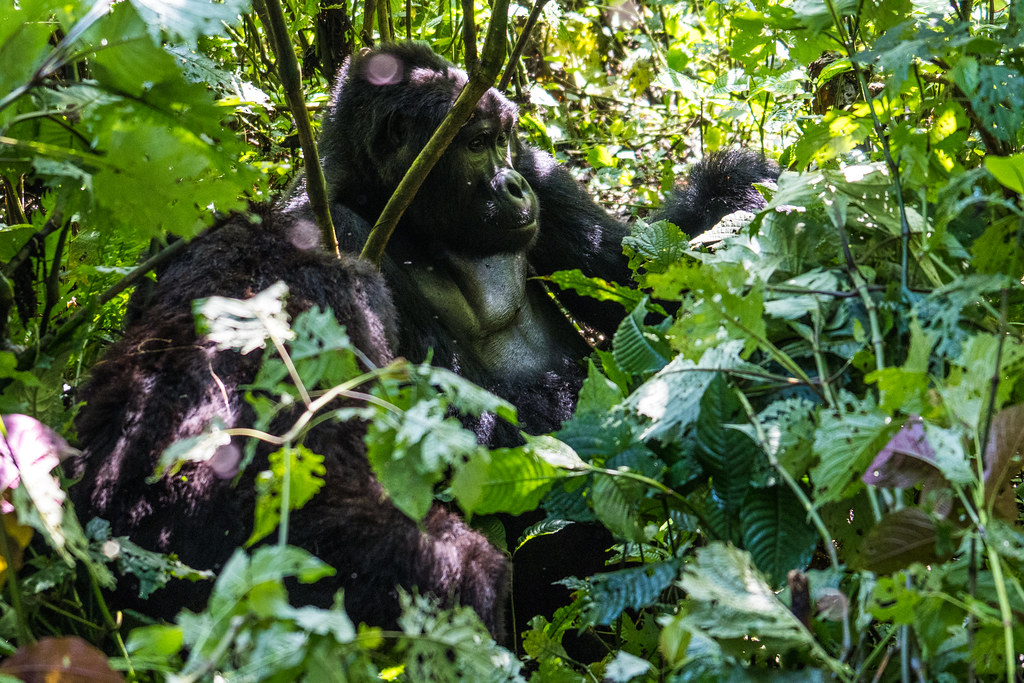Unveiling the Majestic Giant of the Gorilla World
Gorillas are the largest primates on the planet, roaming the lush subtropical and tropical rainforests of Africa.
What is the largest species of gorilla?
Gorillas come in two fascinating species: the Eastern gorilla and the Western gorilla.
The Eastern gorilla is split into two fascinating groups: the Eastern lowland gorilla and the Mountain gorilla. Meanwhile, the Western gorilla branches out into the Western lowland gorilla and the Cross River mountain gorilla.
Gorillas are fascinating creatures, mainly feeding on a variety of plant-based foods. Their diet includes an array of fruits, bamboo shoots, stems, pith, bark, leaves, and roots, with the occasional treat of ants, insects, and termites to spice things up. At times, they have been spotted indulging in soil.
Gorillas exhibit a curious fear of caterpillars and chameleons, the reasons for which remain a mystery.
The playful infant gorillas, brimming with curiosity for every little movement, will make room for the enchanting chameleons and the charming caterpillars.
Gorillas typically avoid drinking water, as the majority of their diet is rich in moisture.
They embrace the rain and skillfully use logs to navigate across streams.
What is the biggest type of gorilla?
Gorillas from the eastern lowlands
This species of gorilla thrives in the lush, vibrant rainforests of the eastern Democratic Republic of Congo, where every corner holds the promise of discovery.
The eastern lowland gorilla population stood at approximately 17,000 in the 1990s, yet recent years have seen a staggering decline of over 50%. Its habitat has shrunk dramatically, from more than 8,000 square miles to roughly 5,000 square miles today.
The eastern lowland gorilla population faces significant challenges, including habitat destruction, disease outbreaks, poaching, and the turmoil of civil unrest in Congo. While the Eastern lowland gorilla holds the title of the largest among its kind, it remains classified as an endangered species on the IUCN Red List.
The eastern lowland gorilla, commonly referred to as Grauer’s gorilla, holds the title of the largest living species among gorillas.
This type of gorilla stands out with its compact muzzle, deep hues, and robust physique. The majestic silverback males can tip the scales at an impressive 272 kilograms, reaching heights of around 1.76 meters, while the females, slightly smaller, can weigh less and stand up to 1.60 meters tall.
Western lowland gorilla
The western lowland gorilla is a fascinating subspecies of the Western gorilla, found in the vibrant landscapes of the Democratic Republic of Congo, Equatorial Guinea, Gabon, Angola, Cameroon, and the Central African Republic.
This unique subspecies of gorilla thrives in a zoo environment and holds the title of the smallest among its relatives.
Once upon a time, there was a remarkable western lowland gorilla named Snowflake, the only albino of his kind ever documented, hailing from the vibrant lands of Equatorial Guinea.
Majestic mountain gorilla
The mountain gorilla, a fascinating subspecies of the eastern lowland gorilla, thrives in the lush tropical rainforests of Rwanda, Uganda, and the Democratic Republic of Congo.
This unique subspecies of mountain gorilla thrives in the wild, where its spirit and vitality can truly flourish.
As of 2018, the wild is home to approximately 1004 mountain gorillas.
This is the gorilla species you can encounter while trekking through the wild landscapes of Uganda and Rwanda.
Explore the fascinating world of the cross river gorilla.
The Cross River gorilla was designated as a subspecies in 1904 by Paul Matschie.
This species of gorilla roams the lush, forested hills along the border of Cameroon and Nigeria.
This species of gorilla is on the brink of extinction, with only around 250 mature individuals remaining in the wild.

